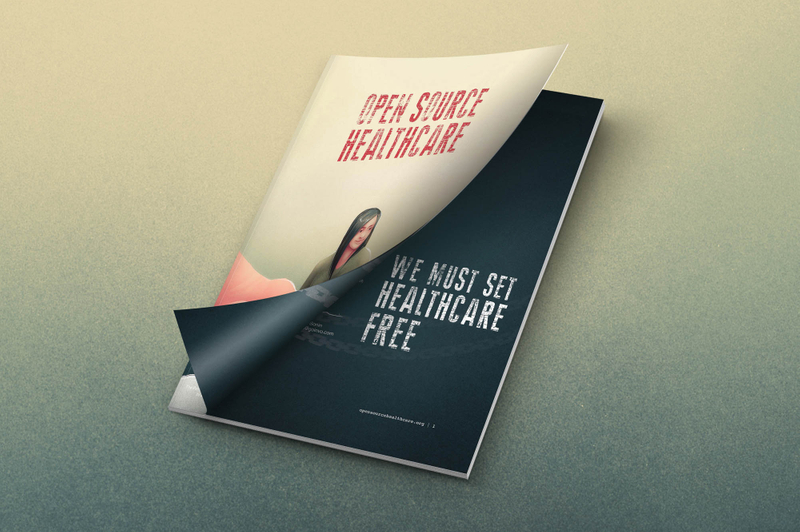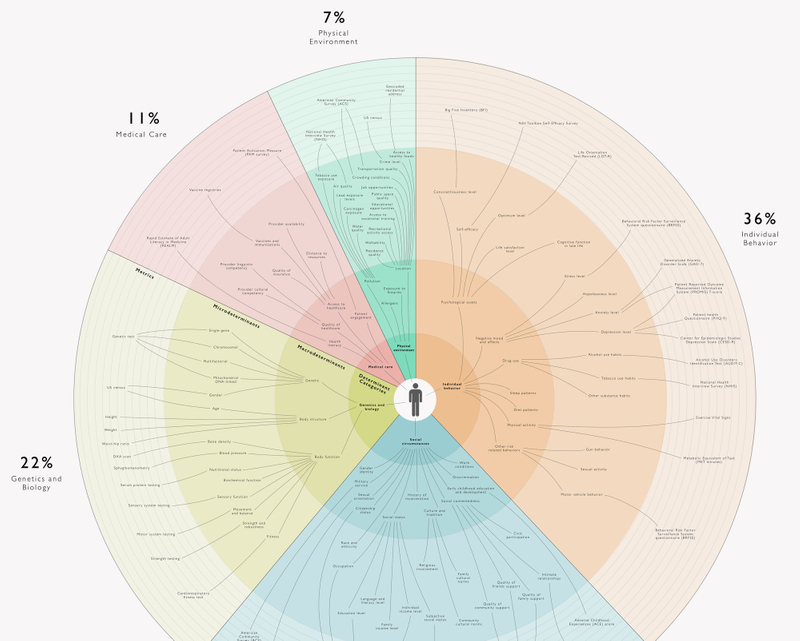
Engaging Patients to Understand Health Data
for FasterCures
Problem
Comprehension of health information is fundamental to well-being, patient empowerment, and decision-making. However, a scant 12% of US adults are health literate, and only 41% of individuals have even accessed their medical record. Driven by their mission to place patients first, FasterCures partnered with GoInvo to educate and engage patients on health data.
Solution
We crafted two open source prototypes built on educational frameworks, gamification, and behavior change to effectively educate and engage a wide range of patients about health data.
Results
In a usability test of the prototypes, conducted with 30 patients, 97% were able to recall the 5 main factors of health data, and 90% engaged with an online quiz.
Time: 1 designer for 2.5 months Tags: Public health and policy, Patient engagement, Open source
Process
Research through multiple techniques
GoInvo and FasterCures surveyed approximately 700 patients and caretakers and conducted in-depth interviews with 15 industry experts, along with reviewing the latest research to understand patient needs, barriers, and motivations around health literacy and being engaged in one’s health. In addition, we polled industry experts on what health data means to them to galvanize a health data definition grounded in the determinants of health, including social determinants1.
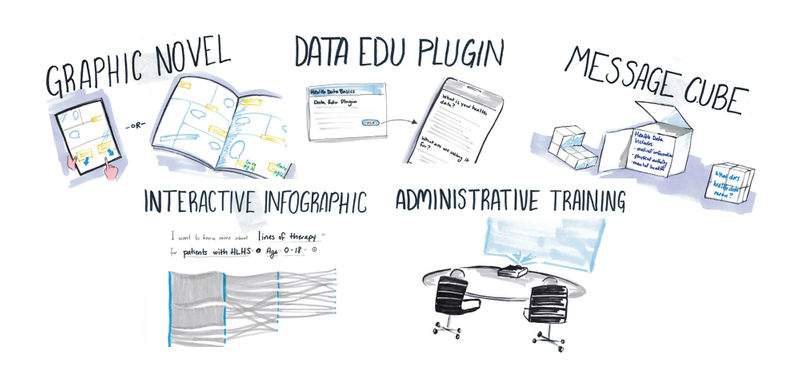
Fail Fast & Early
We began by generating as many concepts as possible as quickly as possible. In a workshop with our FasterCures partners, we sketched our as many ideas in rapid fire. Later we took those ideas, adding several new ones, sketching them out in more detail with a short description, environment, audience reached, and analysis of scalability and longevity, categorizing.

Prioritize rigorously
To narrow our 30 concepts, we scored each in terms of reach, educational impact, scalability, and others. Together with our partners at FasterCures and a panel of patient organization stakeholders, we weighed these factors against project goals to identify the right course of action.
Flexible Partnership that Adapts to Challenges
Initially, two concepts emerged as contenders to educate on health data —on the digital side, a software plug-in that could be integrated into a variety of applications, and on the physical side, on-site clinical installations leveraging a series of environmental graphics. After several rounds of review, however, the concepts struggled to balance the needs for patient engagement with in-depth content. We took a step back to realign project goals and establish what FasterCures truly needed. Together, the team decided to focus on an open source educational plug-in.
Insights

Integrate Social Determinants of Health
Before this project, a definition of health data didn’t exist, or even a consensus by experts on what health data included. The most common notion of health data needed to be expanded to go beyond medical records and devices and include the social, environmental, and behavioral determinants of health1.
Start with health, not health data.
Patients typically interact with health data to accomplish a larger goal of improving their health but also enhancing their quality of life. Knowing this, honed the approach and further focused the message to further motivate by appealing to goals.
Patients and families want their health data
As part of the project, FasterCures brought in leaders from patient outreach groups as our advisory panel for the year long engagement. They gave input on problems, gave feedback on designs, co-created concepts, and offered insight into their patient groups. With their focus on rare disease and chronic conditions, their patients and families were more engaged in their health than your typical patient. Because of this engagement, many were demanding their health data whether to participate more actively in their health and understand their condition or treatment better, or to keep the medical staff in check as a safety and health need. In order to spread this basic health measure to more patients, they would need to get more engaged in their health and wellness.
Solution
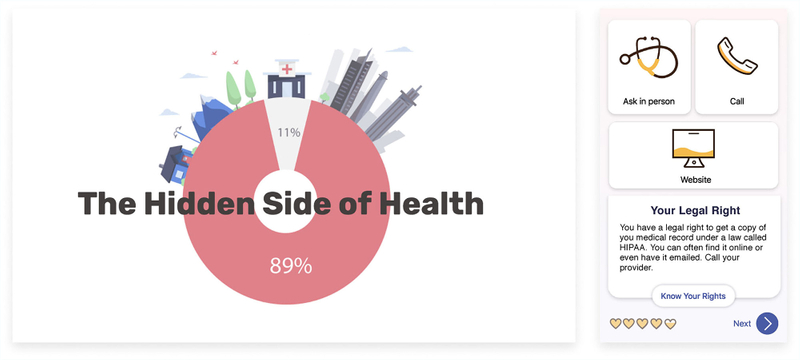
Educational open source plugins
GoInvo crafted two plug-in prototypes designed with techniques based on educational models, gamification, and behavior change research. The designs are open source so that designers and engineers can recycle and reuse them in web and mobile services, spreading health data education to their patients while promoting a single definition of health data.
To meet the needs for a wide array of behaviors and learning methods, we developed two approaches. One prototype was well suited for individuals who want just the basics on health data, while the other benefited individuals with a higher motivation to learn more and would pair with onboarding processes for health and wellness apps.
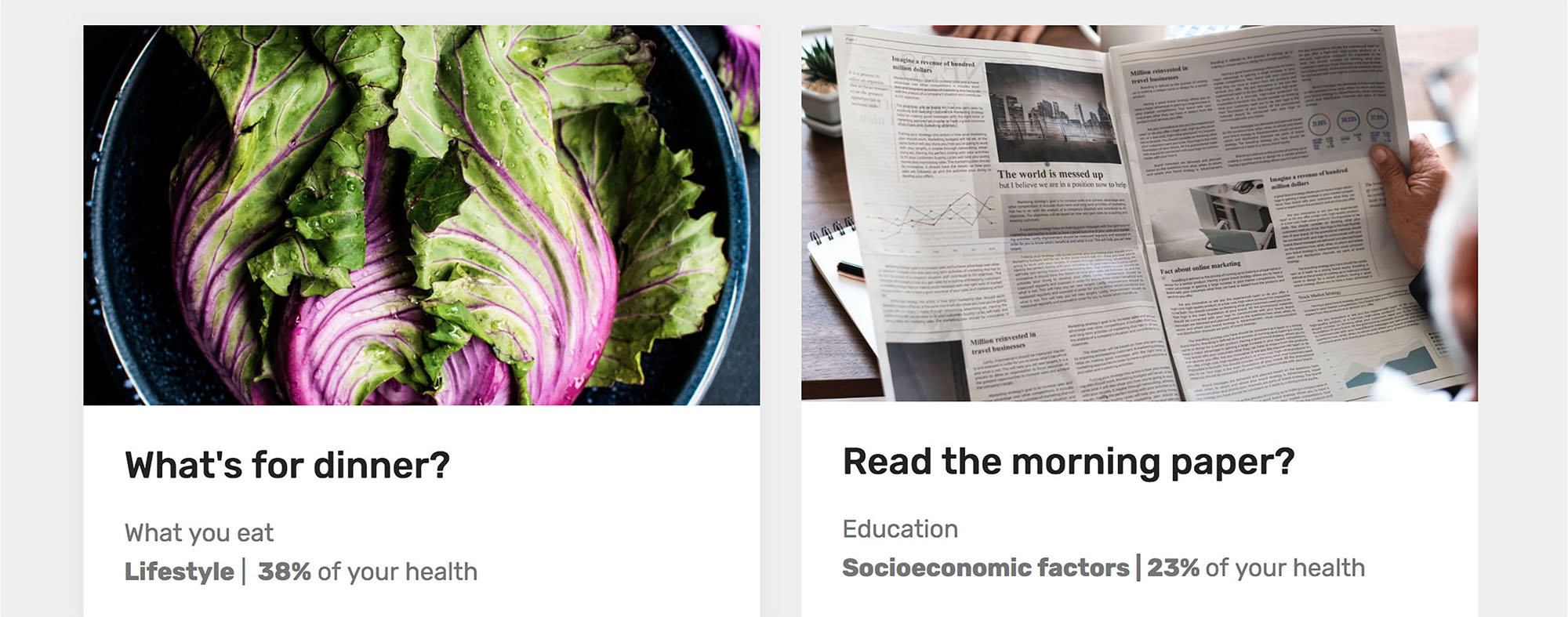
Engagement through curiosity
The introduction would hook the user with a surprising fact and graphic that medical care only composes 11% of health, appealing to their sense of curiosity to discover that there is more to health data than the medical aspect. Individuals could then unravel the surprising ways wellness and health data permeate life through an array of interactive examples.
Designed with behavior change frameworks
The Health Belief Model (HBM), used by social scientists in public health, suggests that behavior change is more likely if messaging successfully targets barriers, benefits, self-efficacy, and threat2. Providing individuals with feedback and suggestions that help break down barriers, and arms them with the ability to do it themselves. This model leads to higher rates of behavior change rather than providing them with just the facts. Different screens address the elements of models to encourage an individual to take action.

Gamification for knowledge retention
Each prototype featured fun and engaging quizzes that allowed patients to interact with facts and tips, rather than reading static articles, leading to better knowledge retention. One set of questions planted a sprout that would grow with each correct answer, appealing to one’s sense of caretaking.
Validation with patients
In order to test how successful each approach would be in the wild, thirty patients reviewed the prototypes and completed a survey measuring trust, credibility, usability, and appearance. Twenty-nine out of thirty patients correctly identified the five factors of health data, demonstrating the effectiveness of the educational tool.
Next Steps
Building upon the foundation of plug-in prototypes and open source assets, FasterCures and GoInvo are reaching out to partners to conduct further trials and implementation.
Results
Up next
References
- Determinants of Health by GoInvo: https://www.goinvo.com/features/determinants-of-health/
- The Health Belief Model as an Explanatory Framework in Communication Research: Exploring Parallel, Serial, and Moderated Mediation: https://www.ncbi.nlm.nih.gov/pmc/articles/PMC4530978/
- Pew Mobile Fact Sheet: http://www.pewinternet.org/fact-sheet/mobile/
